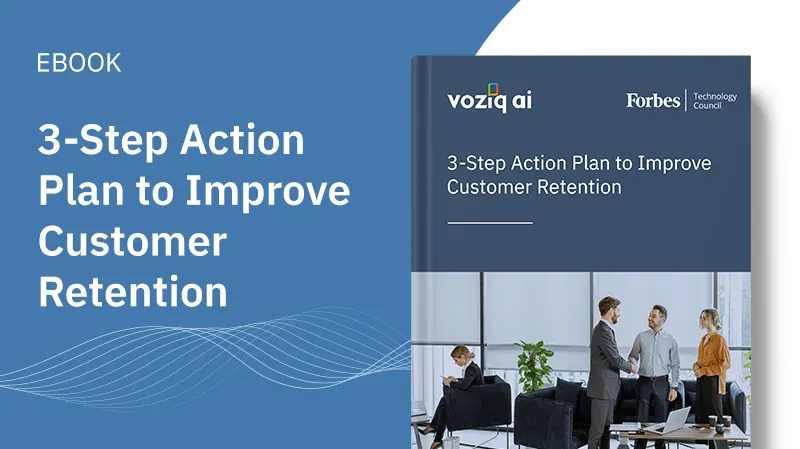Customer Churn: You May Be Losing More than You Think

Customer Churn: You May Be Losing More than You Think
A loyal customer base is the biggest asset of a business, and hence retention is a key priority for the bottom-line. Today, it is more crucial and at the same time, challenging than ever. This is due to crisis-hit consumer optimism, changing customer requirements and rapid technology shifts that have raised expectations of customers and provided them with multiple options to switch to.
Put together, these factors have augmented the implications of customer churn in an unprecedented manner, especially for recurring revenue businesses. The most noticeable impact of churn is the loss of revenue in customer lifetime value. Consider a company with one million customer base and about $500 average revenue per customer per year. A 20% annual churn rate would mean 200,000 customer cancellations and $10 million per year in lost revenue. Applying the Pareto principle here would mean that the impact of churn is probably a lot bigger because the company might be losing many customers who are paying higher than the average recurring charge ($500)
But this isn’t all. There is more to the true cost of losing customers. Let’s look at how churn implications go beyond short-term revenue loss and significantly impacts a company’s top-line growth.
- Loss of additional profit: Various studies suggest that customers that have been longer with a company tend to spend more. They are also more likely to renew their subscription and upgrade. It is because of the trust built over time. The same accumulated trust also encourages them to buy and use additional products/services of the company. When customers leave, they take away these opportunities.
- Win-back expenses: Retaining customers after cancellation incurs marketing costs. Companies try to win customers back through offers, discounts, and incentives. It worsens when the win-back campaigns are run without the proper understanding of churn causes. Customers find these campaigns irrelevant, and there is no ROI to the company.
- Negative advertising: Nothing influences buying decisions like word of mouth. Most purchases are made based on the reviews from previous customers. Unhappy customers are more likely to share their experience in their community than happy customers. Since poor experience remains the primary cause of customers leaving, churn can result in bad advertising for the company.
- Lost referrals: Happy customers bring referrals. Referrals not only tend to stay longer, but they have also proven to have a more lifetime value. According to a case study published by The Wharton School of the University of Pennsylvania in 2013, referrals from existing customers generated higher profit margins, were more loyal to the business and showed more spending. Thus, this is another lost revenue opportunity with a customer gone.
- Competitive disadvantage: Your loss is your competitor’s win. Poor experience pushes customers to choose another solution provider. Besides, when they decide to switch next in the future, they may skip you from the list of options to compare. This impacts your competitive positioning.
- Rising marketing cost: It is well established that acquiring a new customer is several times more expensive than retaining one. It requires going through the sales cycle all over again and involves expenses on every stage, such as campaigns, advertising, commissions etc. Moreover, upselling to new customers is relatively difficult. Besides, attracting new prospects puts additional pressure on sales teams and consumes a major share of marketing budget and resources, eating into the share reserved for retention initiatives. This can result in impacting customer relationships, leading to an increased churn rate.
- Higher service cost: Not only do loyal customers pay more, but it is also less costly to serve them when compared to new customers. If a customer cancels after the first year, it exacerbates the loss.
- Impact on business valuation: Recurring revenue denotes business growth. The valuation of a business is directly proportional to how long customers continue to invest in it. Good retention score indicates customer have strong faith company’s offering and that recurring revenue has a sizeable share in its overall revenue which promises to grow further. It also cuts marketing expenses considerably, further increasing net profits. A higher churn rate means just the opposite, weakening competitive positioning of the company. Thus, if you are looking to raise capital for expansion or sell the company, ongoing churn can cost you millions of dollars during valuation.
Customer attrition has a significant impact on short as well as the long-term health of a company. Although it is impossible to attain a 100% retention rate, having an effective retention strategy that consistently delivers retention gains is an imperative for leading the market.
Companies should be committed to continuous value delivery throughout the journey of customers across all touchpoints. They should listen to the voice of their customers, understand their sentiments and address their concerns proactively to deliver a superior experience. While it is a challenging task, it is certainly rewarding.






